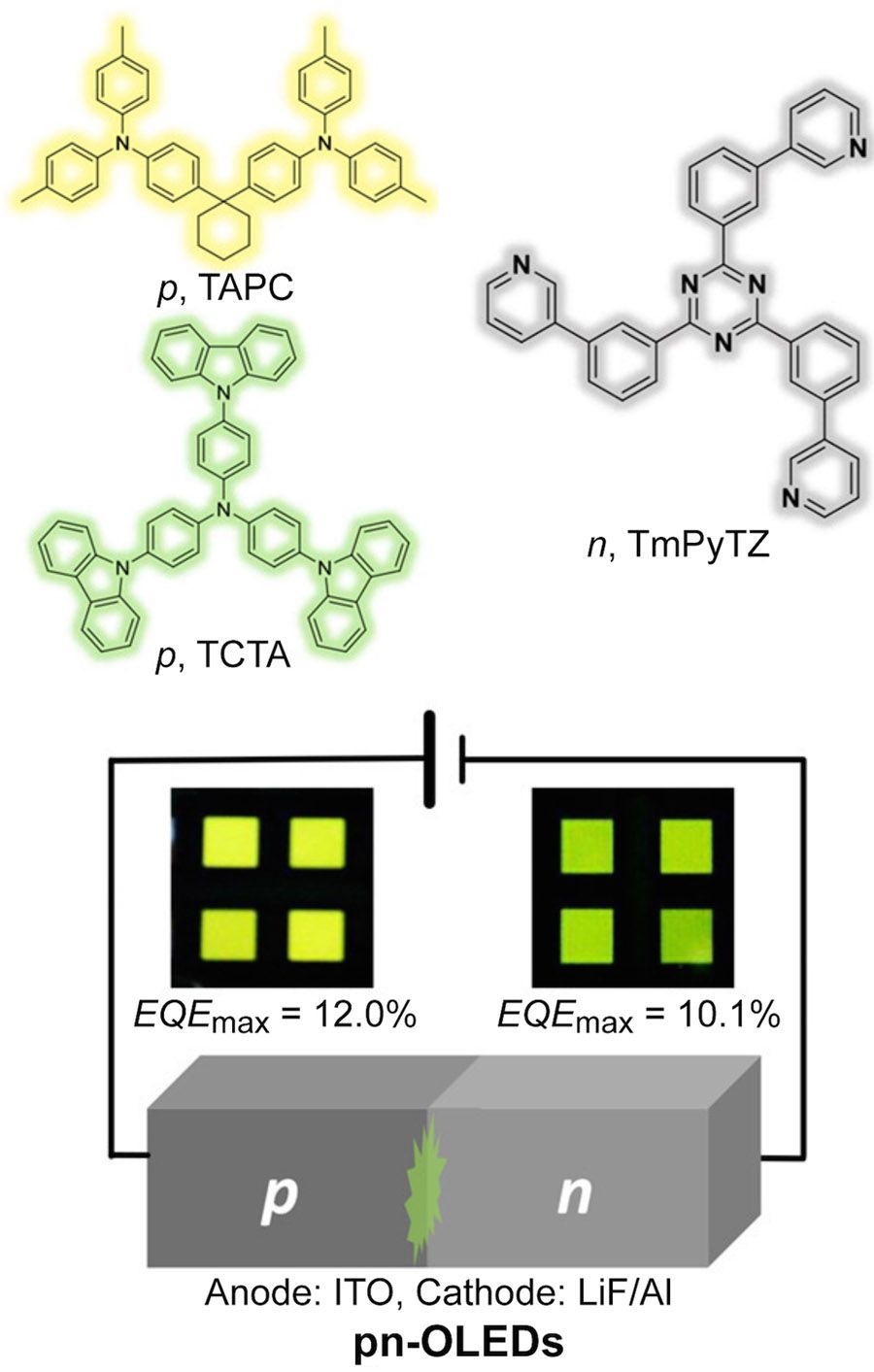A purely organic p–n junction is used as the luminescent center in a novel planar device that exhibits a high external quantum efficiency and an extremely low driving voltage.

In recent years, organic LEDs (OLEDs) have become a popular option for creating digital displays. These devices generally consist of three types of semiconductors (i.e., a p-type hole-transport layer, an n-type electron-transport layer, and an emission layer).1–3 The emission layer (normally capable of bipolar transport) provides a platform for carrier capture, exciton generation, and transition, and the luminescent property of an OLED mainly depends on the fluorescence behavior of single-molecule emitters. However, the incorporation of the emission layer within the structure of an OLED causes two energy barriers to be induced at the interfaces with the emission and transport layers. This means that the driving voltages for OLEDs are generally much larger than for traditional inorganic LEDs (with similarly chromatic emission). Moreover, the excitons that are generated at most purely organic emitters have a strong binding energy.
